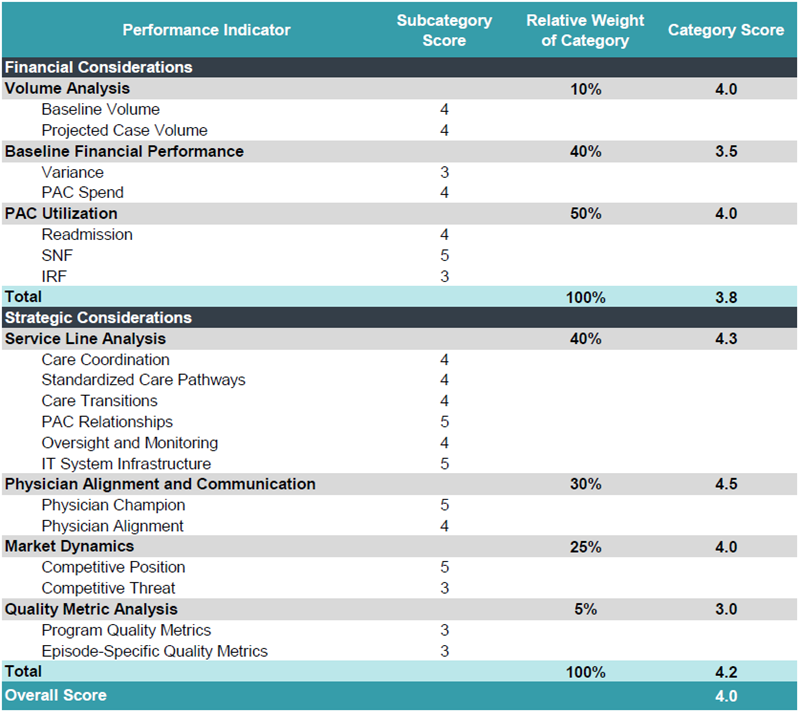
Over the past few months, we’ve examined the timeline for building your BPCI Advanced program and reviewed what to do with the claims data released by CMS in May 2018. Now that you’ve received your data, it is time to further evaluate the opportunity to succeed under the BPCI Advanced program.
Evaluating Claims Data
Based on both our recent client work and our initial review of the CMS data and financial analytics, it appears that CMS has designed the target prices to ensure organizations must make improvements in care redesign to achieve success. Effective evaluation of the claims data will offer insight into the financial opportunity for the 32 clinical episodes. However, the evaluation should not stop at just finances but should examine the key strategic considerations that may support participation in a clinical episode, as well. A structured approach to evaluation is necessary to effectively understand strategic considerations alongside financial performance for all 32 episodes across a variety of service lines. In addition, using a structured approach will allow organizations to compare episode performance side by side to help choose those episodes best suited to their respective situations.
Using a Scorecard Tool for Evaluation
We have developed a scorecard tool to facilitate the structured approach necessary to evaluate episodes across the key functional areas of strategy and finance, two key components for decision-making. An example of this tool is provided in figure 1.

With regard to finance, quantitative factors such as volume, total episode spend, post-acute utilization, post-acute spend, and overall financial performance are considered and scored. The scorecard utilizes a scale of 1 to 5, with 1 representing a negative impact and 5 representing a very positive impact. The scorecard provides a separate score by bundle for financial performance and the corresponding opportunity.
Regarding strategy, the episodes are evaluated across four broad categories—service line care analysis, physician alignment and communication, market dynamics, and quality metrics analysis—each of which has its own specific set of performance indicators. The topics and performance metrics provide the framework for an organization’s strategic discussion regarding the bundled payment opportunity. The organization then composes a score for each strategic consideration and its associated performance indicators. The strategic evaluation reflects system priorities and the importance of strategy in selecting the most appropriate bundles. The scorecard provides a separate score by bundle for strategic consideration. The total scores for the finance and strategy considerations are then combined to create an overall score for each bundle.
It could be argued that the strategic considerations are just as important as the financial considerations for most organizations making the decision to participate in BPCI Advanced. While a strategic evaluation is often considered a more subjective exercise than a financial assessment, the use of the scorecard provides a structured framework for evaluation that enables the overall assessment to be more objective.
Understanding the Benefits
Using the scorecard will ensure organizations are completing a comprehensive assessment of the BPCI Advanced opportunity through a collaborative process that utilizes both a quantitative and qualitative approach. The scorecard enables organizations to confidently determine that the opportunity under BPCI Advanced is financially and strategically sound, measurable, and able to be clearly communicated to key decision-makers within the organization.



